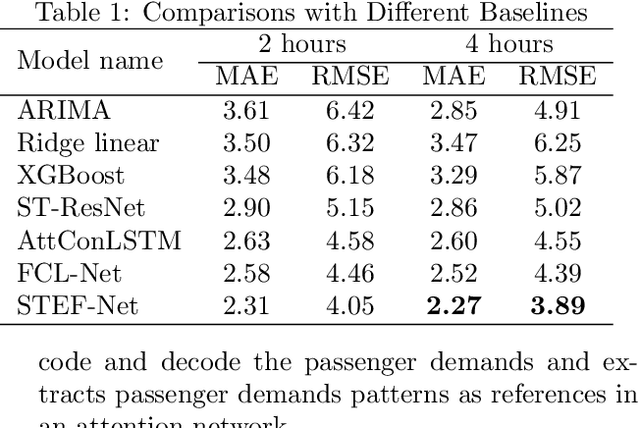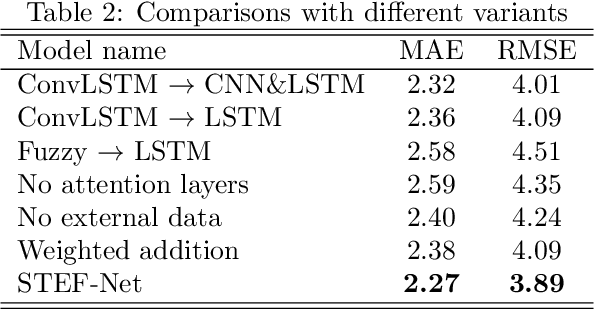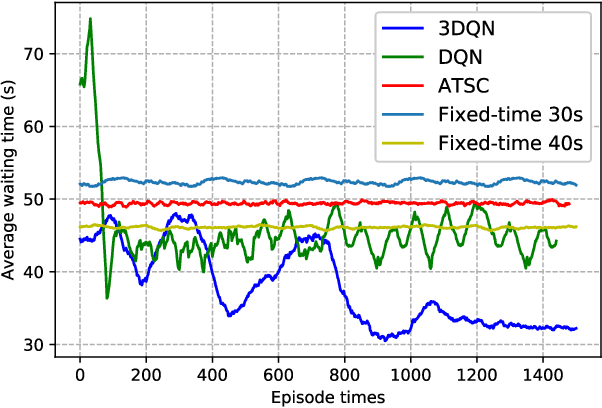Xiaoyuan Liang
A Deep Spatio-Temporal Fuzzy Neural Network for Passenger Demand Prediction
May 13, 2019



Abstract:In spite of its importance, passenger demand prediction is a highly challenging problem, because the demand is simultaneously influenced by the complex interactions among many spatial and temporal factors and other external factors such as weather. To address this problem, we propose a Spatio-TEmporal Fuzzy neural Network (STEF-Net) to accurately predict passenger demands incorporating the complex interactions of all known important factors. We design an end-to-end learning framework with different neural networks modeling different factors. Specifically, we propose to capture spatio-temporal feature interactions via a convolutional long short-term memory network and model external factors via a fuzzy neural network that handles data uncertainty significantly better than deterministic methods. To keep the temporal relations when fusing two networks and emphasize discriminative spatio-temporal feature interactions, we employ a novel feature fusion method with a convolution operation and an attention layer. As far as we know, our work is the first to fuse a deep recurrent neural network and a fuzzy neural network to model complex spatial-temporal feature interactions with additional uncertain input features for predictive learning. Experiments on a large-scale real-world dataset show that our model achieves more than 10% improvement over the state-of-the-art approaches.
* https://epubs.siam.org/doi/abs/10.1137/1.9781611975673.12
Deep Reinforcement Learning for Traffic Light Control in Vehicular Networks
Mar 29, 2018



Abstract:Existing inefficient traffic light control causes numerous problems, such as long delay and waste of energy. To improve efficiency, taking real-time traffic information as an input and dynamically adjusting the traffic light duration accordingly is a must. In terms of how to dynamically adjust traffic signals' duration, existing works either split the traffic signal into equal duration or extract limited traffic information from the real data. In this paper, we study how to decide the traffic signals' duration based on the collected data from different sensors and vehicular networks. We propose a deep reinforcement learning model to control the traffic light. In the model, we quantify the complex traffic scenario as states by collecting data and dividing the whole intersection into small grids. The timing changes of a traffic light are the actions, which are modeled as a high-dimension Markov decision process. The reward is the cumulative waiting time difference between two cycles. To solve the model, a convolutional neural network is employed to map the states to rewards. The proposed model is composed of several components to improve the performance, such as dueling network, target network, double Q-learning network, and prioritized experience replay. We evaluate our model via simulation in the Simulation of Urban MObility (SUMO) in a vehicular network, and the simulation results show the efficiency of our model in controlling traffic lights.
 Add to Chrome
Add to Chrome Add to Firefox
Add to Firefox Add to Edge
Add to Edge